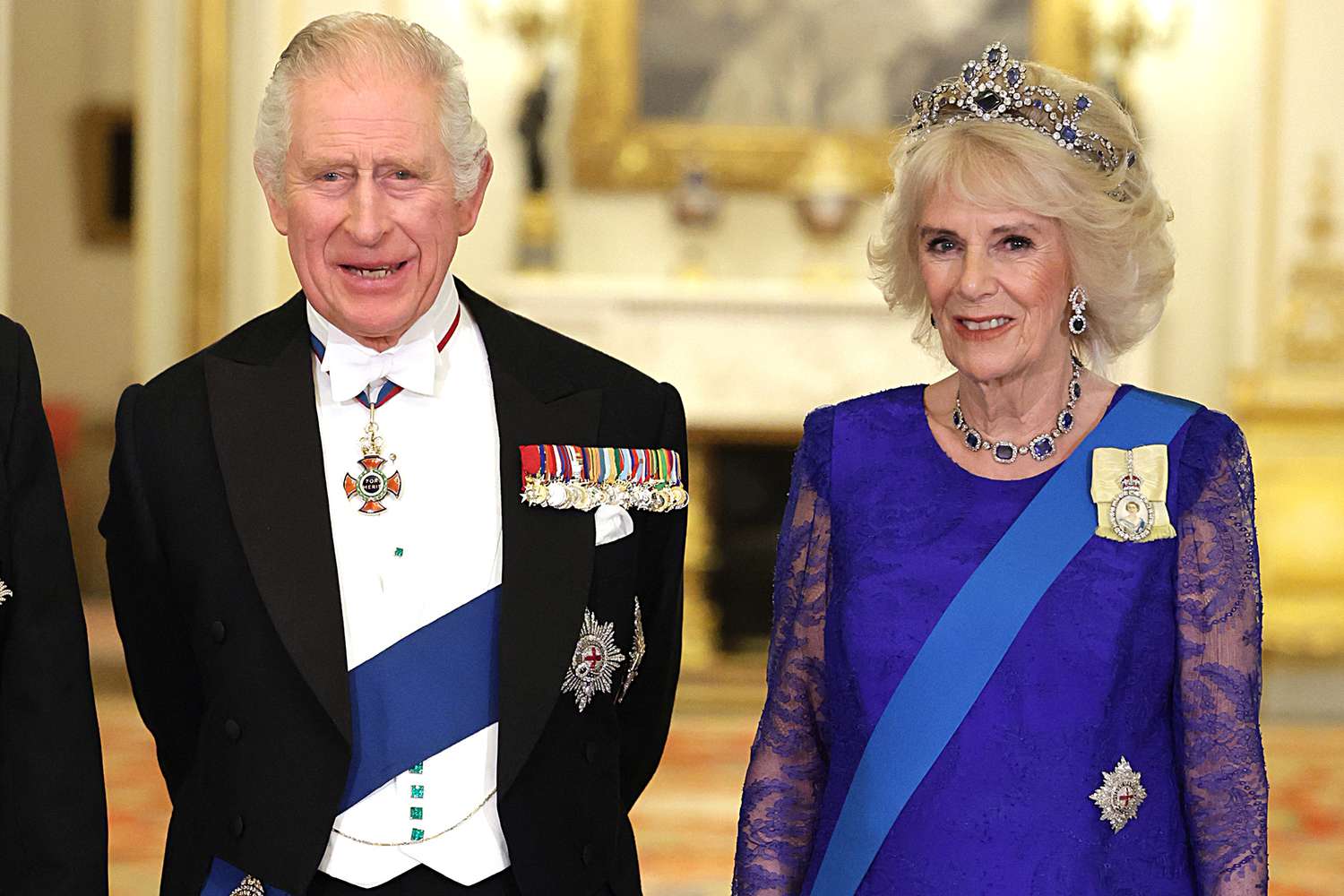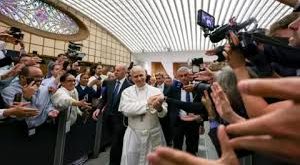
When William, Duke of Normandy, defeated King Harold at Hastings in
1066, he was determined that he should be seen as the legitimate king of
England. He set his sights on being crowned in the new Abbey Church that
Edward the Confessor had built beside his Palace at Westminster. For
almost a thousand years, Westminster Abbey, with the Shrine of St Edward,
King and Confessor, at its heart, has remained the place of coronation for
our Monarchs.
The rite of Coronation in England, which is a series of ancient rituals,
has its roots in the ninth century and was codified in the fourteenth in a book
called the Liber Regalis, which the Abbey still possesses. It was further
modified over the following centuries, adapting to changing needs.
Today’s service draws on that long tradition, set once again within the
context of the Eucharist, which is the defining act of worship for the Church
Universal. Bible passages will be read from the letter to the Colossians and
the Gospel according to St Luke; the Archbishop will preach a short sermon;
hymns will be sung; and bread and wine will be offered, consecrated, and
received by The King and Queen, to strengthen and guide them in their
public service.
Early in the service, His Majesty The King turns to each of the four points of
the compass and is recognized by his peoples as their ‘undoubted King’, who
acceded immediately upon the death of Her Majesty Queen Elizabeth II.
A Bible is presented to The King, upon which he swears oaths to govern the
peoples with justice and mercy and uphold the Churches. Then, for the first
time at a Coronation, The King prays publicly for grace to be a blessing to
all … of every faith and belief’ and to serve after the pattern of Christ.
After the sermon, the ancient hymn Veni, Creator Spiritus is sung in languages
from across the United Kingdom, calling on the Holy Spirit just before the
the most sacred part of the Coronation rite—the anointing with holy oil. A
Screen shields The King from view as he sits in the Coronation Chair for this
most solemn and personal of moments. Beneath him, the Cosmati pavement
symbolizes the whole cosmos on the Day of Judgement, when Christ will
judge all things in his mercy; the King of kings, whom all Monarchs are
called to reflect, and to whom all must give an account.
Once anointed, The King is vested in priestly garments that symbolize both
humility (the Colobium Sindonis) and splendor (the Supertunica, Stole, and
Robe); reflecting the two natures of Christ who ‘though he was in the form
of God … emptied himself … being born in human likeness (from
Philippians 2: 6–8). The King represents humanity restored to its full
dignity and glory in Christ, as a chosen race, a royal priesthood, a holy
nation’ (1 Peter 2: 9).
Various items of regalia are presented to The King, each a visible reminder
of his great responsibility under God. There are Spurs and Armills, which
would have been worn by a medieval knight, and a Sword which The King
first wears and then offers in the service of God. Then come the symbols of
secular and spiritual power: an Orb, representing the world under Christ;
a Sceptre with Cross, representing earthly power, held in a restrained,
gloved hand; and the Sceptre with Dove, representing spiritual authority
exercised chiefly in mercy. There is also a Ring symbolizing the faithful
‘marriage’ of a Monarch to his people. In particular, those presenting the
regalia to The King reflect the diversity of the United Kingdom and its
peoples, in striking contrast to seventy years ago. A moment of great
symbolism follows when the Archbishop places St Edward’s Crown on The
King’s anointed head, all cry ‘God Save The King’, a fanfare is sounded, the
Abbey bells are rung, and gun salutes are fired.
The King then moves from the Coronation Chair to his Throne in the center
of the Abbey and is encouraged by the Archbishop to ‘Stand firm and hold
fast’, confident in God ‘whose throne endures forever.’ Once enthroned,
The King receives Homage (a promise of allegiance and faithfulness,
recognizing his spiritual and earthly authority), first from the Archbishop of
Canterbury, then from His Royal Highness The Prince of Wales, and finally
the opportunity for the congregation and people elsewhere to participate in
various ways. Before joining The King, enthroned alongside him in the
center of the Abbey, The Queen is herself anointed and crowned, and
presented with her items of regalia.
The Liturgy of the Sacrament, with the giving of Holy Communion to The
King and Queen, constitute the remainder of the service, after which they
retire into the Chapel of St Edward to prepare for the final procession.
In 1547, Archbishop Cranmer preached at the Coronation of Edward VI,
The Almighty God of his mercy let the light of his countenance shine upon
your majesty, grant you a prosperous and happy reign, defend you, and
save you; and let your subjects say, Amen.
Throughout the changing centuries, the Coronation Service has held
together hopes both for our immediate and eternal destinies. It has been
and still is an occasion for prayer. Today we pray for our King, and pray
with him, for a nation united and rejoicing in its diversity, and, ultimately,
for a world healed and reconciled in the eternal banquet of the saints in
heaven.
Members of the Congregation are requested kindly to refrain from using cameras,
video, or sound recording equipment. Please ensure that mobile phones and other
electronic devices are switched off. During the music before the service, please keep
the conversation to a minimum. Those who wish are invited to join in the words in bold type.
The church is served by a hearing loop. Users should turn their hearing aid to the
setting marked T.
The service is conducted by The Most Reverend and Right Honourable Justin Welby,
Lord Archbishop of Canterbury, Primate of all England and Metropolitan.
The service is sung by the Choirs of Westminster Abbey and His Majesty’s Chapel
Royal, St James’s Palace (Director of Music: Joseph McHardy), with choristers from
Methodist College, Belfast (Director of Music: Ruth McCartney), and Truro
Cathedral Choir (Director of Music until April 2023: Christopher Gray), and an octet
from the Monteverdi Choir.
The music during the service is directed by Andrew Nethsingha, Organist and Master
of the Choristers, at Westminster Abbey.
The organ is played by Peter Holder, Sub-Organist, Westminster Abbey.
The Monteverdi Choir and English Baroque Soloists are conducted by Sir John Eliot
Gardiner CBE.
The Coronation Orchestra is conducted by Sir Antonio Pappano.
The State Trumpeters of the Household Cavalry are led by Trumpet Major Julian
Sandford.
The Fanfare Trumpeters of the Royal Air Force are conducted by Wing Commander
Piers Morrell OBE MVO, Principal Director of Music, Royal Air Force.
The fanfare at The Recognition and The Homage was composed for this service by
Dr. Christopher Robinson CVO CBE.
The King’s Scholars of Westminster School are directed by Tim Garrard, Director of
Music.
The Ascension Choir is directed by Abimbola Amoako-Gyampah.
The Byzantine Chant Ensemble is directed by Dr. Alexander Lingas.
The Coronation Brass Ensemble is conducted by Paul Wynne Griffiths.
 Uniquenewsgh.com News, Politics, African News Updates & More
Uniquenewsgh.com News, Politics, African News Updates & More



